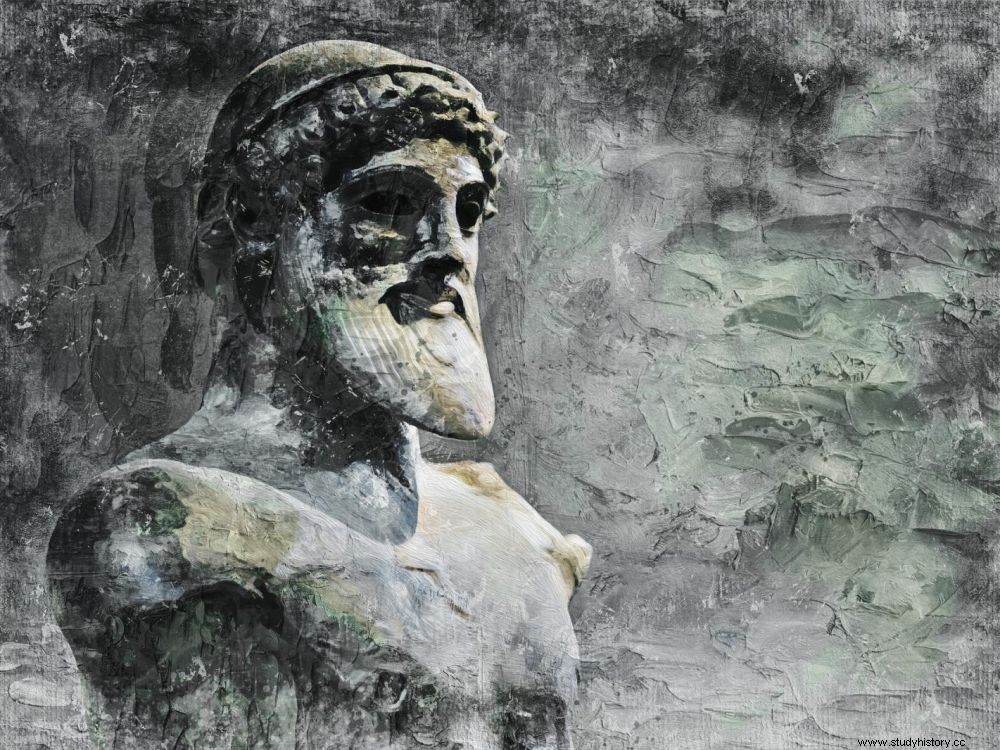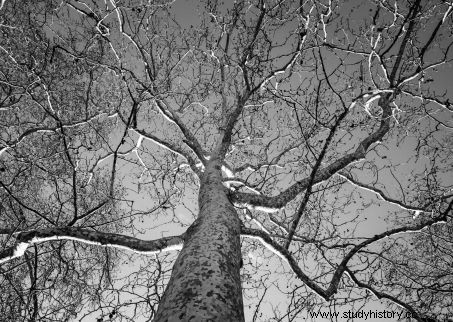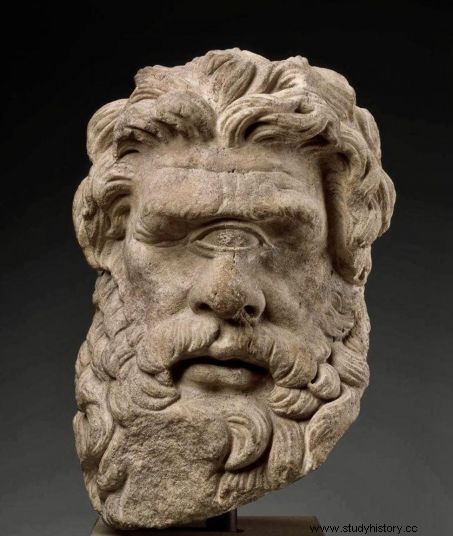In his latest book "Cosmogonies", the historian Julien d'Huy explains how the study of certain myths, using advanced technologies, would make it possible to go back to the origins of humanity!

Of myths and men.
Myth of the Cosmogonic Diving, of the Stolen Sun, or of the Woman-Bird… All human beings like to listen to stories, and have told them since the dawn of time. All you have to do to be convinced of this is to admire the walls of the decorated caves of the Palaeolithic, or to remember the great myths of Antiquity. Let's dream. Would it be possible to go back to the origin of these narrations? Reconstructing its "protorecit" - as the specialists say -, finding its substrate, like archaeologists who strip, layer by layer, the stratigraphic levels of a soil. It is to this fascinating story that Julien d'Huy, a young researcher associated with the Institute of African Worlds (UMR 8171 of the CNRS) invites us in his latest book entitled Cosmogonies published by Editions La Découverte. This specialist in comparative mythology questions the origin of the founding stories, explaining to us how it would be possible to go back to the root of these explanatory stories of the world present in all cultures.
Family resemblance
Some complex myths do indeed have a striking "family resemblance", recalls Julien d'Huy. However, how can this surprising resemblance be explained when their distribution is sometimes several thousand kilometers apart from each other, even separated by oceans? Are these similarities linked to a universal imagination that would lead to the reproduction of archetypal stories? Julien d'Huy puts forward another hypothesis:these stories would maintain real links between them. Variants would have developed over the millennia, even modifying their structure as the diffusions progressed. To establish this, the researcher uses statistical tools to highlight similarities as well as differences, to determine major trends. Research he has been carrying out since 2012 when, working on the rock art of the Saharan desert and Paleolithic Europe, he wanted to understand the meaning of the images adorning the walls of shelters and caves. "That's where I first got the idea of creating trees and networks of myths" , he explains to Sciences et Avenir. This is how he used phylogenetic methods, usually intended for the study of species. Applied to myths, they make it possible to identify similar versions. By then calculating the degree of proximity identified between the different variations of the same myth, it would then be possible to build... large myth trees!

Building myth trees, reconstructing networks and connections, using the tools of phylogenetics. ©Pixabay
Cutting mythemes
Myth of the Cosmogonic Diving, of the Stolen Sun, or of the Woman-Bird… All human beings like to listen to stories, and have told them since the dawn of time. All you have to do to be convinced of this is to admire the walls of the decorated caves of the Palaeolithic, or to remember the great myths of Antiquity. Let's dream. Would it be possible to go back to the origin of these narrations? Reconstructing its "protorecit" - as the specialists say -, finding its substrate, like archaeologists who strip, layer by layer, the stratigraphic levels of a soil. It is to this fascinating story that Julien d'Huy, a young researcher associated with the Institute of African Worlds (UMR 8171 of the CNRS) invites us in his latest book entitled Cosmogonies published by Editions La Découverte. This specialist in comparative mythology questions the origin of the founding stories, explaining to us how it would be possible to go back to the root of these explanatory stories of the world present in all cultures.
Family resemblance
Some complex myths do indeed have a striking "family resemblance", recalls Julien d'Huy. However, how can this surprising resemblance be explained when their distribution is sometimes several thousand kilometers apart from each other, even separated by oceans? Are these similarities linked to a universal imagination that would lead to the reproduction of archetypal stories? Julien d'Huy puts forward another hypothesis:these stories would maintain real links between them. Variants would have developed over the millennia, even modifying their structure as the diffusions progressed. To establish this, the researcher uses statistical tools to highlight similarities as well as differences, to determine major trends. Research he has been carrying out since 2012 when, working on the rock art of the Saharan desert and Paleolithic Europe, he wanted to understand the meaning of the images adorning the walls of shelters and caves. "That's where I first got the idea of creating trees and networks of myths" , he explains to Sciences et Avenir. This is how he used phylogenetic methods, usually intended for the study of species. Applied to myths, they make it possible to identify similar versions. By then calculating the degree of proximity identified between the different variations of the same myth, it would then be possible to build... large myth trees!

Building myth trees, reconstructing networks and connections, using the tools of phylogenetics. ©Pixabay
Cutting mythemes
"Two variants of a complex myth that look alike have a very good chance of having had a common ancestor , explains the researcher. To establish it, you need several versions that can be cut into small fragments, to make "mythems", minimal sentences containing a single piece of information. For example:one hero, two heroes, three heroes, etc; a male hero or a female heroine, etc." . These elementary units, these "bricks", are then coded in a binary way, these elements being denoted 0 or 1. Each version thus allows the creation of a binary string which it is then sufficient to compare with the others, until degrees of proximity between each and build phylogenetic trees with these mathematical tools.
Myths accompany human migrations
By comparing the results obtained with those of genetics, Julien d'Huy was also able to observe that the dissemination of certain stories accompanied migratory routes! " A myth spreads outside its people, without necessarily going very far. What is interesting is the correlation that we note between the spread of these myths and that of certain genes highlighted by genetics From then on, comparative mythology contributes to the knowledge of the history of human settlement" . And allows us to follow a migration… going back, for example, to the departure of modern humans from Africa.

Bust of Polyphemus, the one-eyed giant, hero of Greek mythology, kept at the Boston Museum (USA)
Thus the story of Polyphemus, the famous Cyclops sung in the Odyssey of Homer - to cite just one example among many others. If it is found in particular in Greece, or in the Basque country, this theme is widely diffused also in Eurasia and North America, since it is found among the Amerindians Pieds-Noirs Niitsitapi! There, to escape the wrath of the Cyclops, men no longer hide under the fleece of sheep as Homer related... but under that of bison! According to Julien d'Huy, who reconstructed its history, the story therefore had to follow the first waves of settlement which from Asia reached the American continent after crossing the Bering Strait. The researcher has also highlighted the closeness of certain Khoisan myths – the San hunter-gatherers of Africa – with those of aboriginal populations of Australia…their diffusion having begun with the first expansions of Homo sapiens at least 100,000 years ago. /70,000 years. "I thus estimate between 20 and 40 the number of myths that could go back directly to the exit of men from Africa , says Julien d’Huy. These results, coupled with genetic data, could allow us to reconstruct migrations and contacts between populations since the Paleolithic" . An extensive program.
